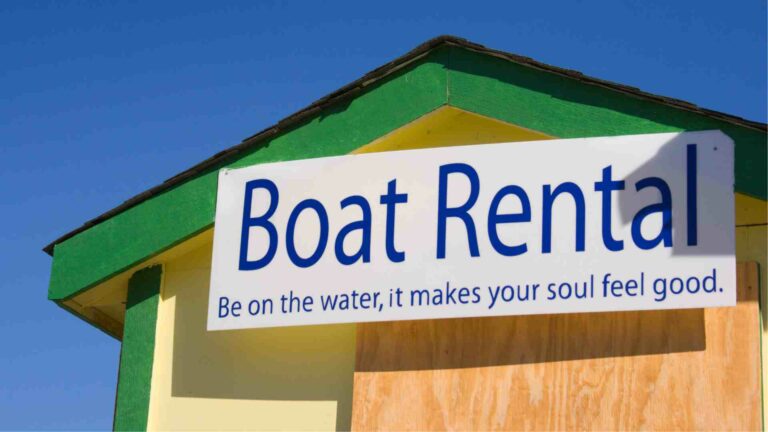What Does Red on Deck Meaning on a Boat?
In the vast expanse of the open sea, where every wave tells a story and every gust of wind carries the whispers of maritime tradition, there exists a phrase that echoes through the hulls of boats and yachts — “Red on Deck.” It’s a mysterious utterance, a code among sailors that beckons curiosity. What does it mean, and why does it hold such significance on the high seas? Join us as we embark on a maritime journey to unravel the secrets behind the phrase, exploring the rich tapestry of nautical traditions that have stood the test of time.
Navigating the waters requires not just skillful seamanship but also a nuanced understanding of maritime language. Clarity in nautical terminology is paramount, ensuring effective communication among sailors and contributing to a safer maritime environment. “Red on Deck” is a prime example of this coded language, and deciphering its meaning unveils a world where every signal carries a crucial message.
In this article, we’ll delve into the origin of “Red on Deck,” exploring the historical context and the maritime traditions that birthed this intriguing phrase. We’ll decipher its meaning in the language of the sea, understanding how it serves as a warning to sailors and a beacon of caution in the dark. Join us as we unravel the mysteries of this nautical code, emphasizing the importance of safety and communication on the open waters. Fair winds await as we set sail into the heart of the maritime enigma that is “Red on Deck.”
The Origins and Evolution of Nautical Language
To truly understand the enigmatic language of the sea, we must first navigate through the historical currents that shaped nautical terminology. As sailors embarked on voyages of discovery, a distinct vocabulary emerged to convey the intricacies of maritime life. From the age of sail to the modern era, phrases like “Red on Deck” find their roots in the sailors’ need for a specialized language, rich with symbolism and practicality. Exploring this historical context unveils a linguistic tapestry woven by the seafaring traditions of cultures worldwide.
As the maritime world evolved, so did the need for effective communication among sailors. The advent of new technologies, larger vessels, and international trade necessitated a standardized approach to nautical language. The once-diverse sea jargon began to undergo evolutionary changes, converging into a universally understood lexicon. We’ll delve into the evolution of phrases like “Red on Deck,” tracing how they adapted to the demands of an ever-changing maritime landscape and the globalized nature of modern shipping.
In the intricate dance of ships on the open sea, the significance of nautical language cannot be overstated. It serves as a vital thread weaving together the fabric of maritime safety. As we explore the roots and evolution of nautical terminology, we’ll uncover how this specialized language acts as a lifeline for sailors, fostering clear communication and preventing misunderstandings that could lead to perilous situations. The lessons embedded in nautical language are not only a testament to the seafaring heritage but also a cornerstone of ensuring the safety of vessels and crew navigating the vast oceans.
Deciphering “Red on Deck”
A. Literal Interpretation: Explaining the Color Code
1. Symbolism of Colors in Nautical Environments
The maritime world is a realm rich in symbolism, and nowhere is this more evident than in the use of colors to convey messages. In the lexicon of nautical communication, each color holds significance, akin to a visual language spoken by sailors.
Understanding this symbolism is key to deciphering the meaning behind phrases like “Red on Deck.” We’ll unravel the symbolic tapestry of colors on the high seas, exploring how hues come alive with meaning, often revealing the intentions and conditions of vessels navigating the ocean expanse.
2. Specific Placement and Use of Red on Boats
Within this chromatic code, red stands out as a beacon of warning and caution. But where does this crimson hue manifest on a boat’s deck, and what does its presence signify? The specific placement of red lights or indicators on a vessel holds vital clues, indicating that certain operations or activities are underway that demand heightened attention.
By examining the practical applications of “Red on Deck,” we’ll gain insight into how this color code plays a pivotal role in ensuring the safety and coordination of maritime activities. Join us as we navigate the literal interpretation of this nautical language, where the color red speaks volumes without uttering a word.
B. Practical Applications: Utilization in Navigation and Safety
1. Red Lights and Their Navigation Significance
The maritime world operates around the clock, and when the sun sets, a different set of rules come into play. Red lights on deck serve as essential tools in the nocturnal ballet of ships. These crimson beacons are not just arbitrary; they are intentional signals embedded in the fabric of navigation.
We’ll delve into the specifics of red lights, exploring how they aid sailors in gauging the position, direction, and activities of other vessels. Understanding the language of red lights on the water is akin to deciphering a silent dialogue that guides ships safely through the darkness.
2. Emergency Preparedness and Protocols
“Red on Deck” isn’t merely a routine signal; it also plays a crucial role in emergency preparedness. In the unpredictable realm of the open sea, unforeseen circumstances can arise, demanding swift and coordinated responses.
We’ll unravel the protocols associated with the deployment of red signals during emergencies, be it a medical situation, fire, or any other perilous scenario. Examining the practical applications of “Red on Deck” in emergency situations sheds light on how this nautical language becomes a beacon of safety, guiding both the distressed vessel and those coming to its aid through the tumultuous waters.
As we navigate through the practical applications of the color red on boats, from aiding navigation in the dark to signaling emergencies, we gain a deeper appreciation for the meticulous thought and purpose embedded in every aspect of maritime communication. Join us as we explore the practical nuances of “Red on Deck” and its role in ensuring the safety and efficiency of maritime operations.
Importance of Clear Communication in Maritime Settings
A. Precision in Instruction: Necessity for Safety
In the intricate dance of vessels navigating the vast expanse of the open sea, precision in communication is not a luxury but a necessity for ensuring the safety of both crew and ships. The maritime environment is unforgiving, with potential hazards lurking beneath the surface or hidden in the dark of night.
We’ll explore how “Red on Deck” and similar nautical phrases exemplify the need for clear and precise instructions. In this realm where split-second decisions can mean the difference between safety and peril, the importance of communicating instructions with utmost precision becomes paramount.
B. Role of Nautical Phrases in Quick and Accurate Communication
The language of the sea is a tapestry woven with nautical phrases, each carrying a specific meaning that resonates with sailors globally. These phrases, including the enigmatic “Red on Deck,” play a pivotal role in enabling quick and accurate communication.
We’ll unravel the efficiency of this specialized language, examining how it allows sailors to convey complex messages succinctly and ensures that information is understood across language barriers. As we navigate the waters of nautical communication, we’ll uncover the synergy between clarity and efficiency that keeps the maritime world in harmony.
C. Preventative Measures Enabled by Effective Communication
Effective communication on the high seas isn’t just about conveying information; it’s about preventing accidents before they occur. “Red on Deck” serves as a preventative measure, a visual cue that prompts sailors to take heed and adjust their course accordingly.
We’ll explore how the clear communication of intentions and conditions on board enables proactive measures, contributing to the overall safety culture of the maritime industry. As we delve into the preventative role of effective communication, we’ll recognize the role it plays in fostering a secure and collaborative environment on the open waters.
In this exploration of the importance of clear communication in maritime settings, we’ll witness how precision in instruction, the role of nautical phrases, and preventative measures enabled by effective communication are the pillars that uphold the safety and efficiency of seafaring endeavors. Join us as we navigate through the intricate channels of maritime communication, where every word and signal is a lifeline on the vast ocean expanse.

“Red on Deck” in Varied Contexts
A. Commercial Shipping: Adherence to Maritime Regulations
1. Compliance with International Maritime Laws
In the bustling world of commercial shipping, where vessels traverse international waters to transport goods across the globe, adherence to maritime regulations is not just a legal requirement but a cornerstone of safe and efficient operations.
We’ll explore how phrases like “Red on Deck” play a role in ensuring compliance with international maritime laws. These laws, often standardized by global organizations such as the International Maritime Organization (IMO), mandate specific protocols for communication, navigation, and safety. Understanding and implementing these regulations is not just a matter of legal obligation but a commitment to the well-being of the crew, the cargo, and the environment.
2. Mitigating Risks of Collisions and Accidents
The oceans, despite their vastness, are not immune to the risks of collisions and accidents, especially in the realm of commercial shipping. In this context, the utilization of phrases like “Red on Deck” becomes a proactive measure to mitigate these risks.
By adhering to established communication protocols and signaling systems, commercial vessels can enhance situational awareness, minimize the potential for collisions, and navigate through busy shipping lanes with precision. We’ll unravel how these measures, rooted in maritime regulations, contribute to the overall safety of commercial shipping, safeguarding not only the valuable cargo but also the lives of those at sea.
As we delve into the intricacies of commercial shipping, we’ll witness the symbiotic relationship between adherence to maritime regulations and the effective utilization of nautical language. From the legal framework set by international laws to the practical application of phrases like “Red on Deck” in mitigating risks, the commercial shipping industry exemplifies the importance of a regulated and communicative approach to ensure the smooth flow of goods and the safety of all stakeholders at sea. Join us as we navigate through the waters of global commerce, where compliance and clear communication are the compass guiding the way.
B. Recreational Boating: Integration into Boating Culture
1. Enhancing Safety During Nighttime Navigation
For enthusiasts of recreational boating, the integration of nautical language and signaling systems, such as “Red on Deck,” is not just a matter of tradition but a crucial element in enhancing safety, particularly during nighttime navigation. We’ll explore how recreational boaters utilize color-coded signals to communicate their activities and intentions to other vessels on the water.
The deployment of red lights, akin to a secret handshake among boating enthusiasts, becomes a visual language that fosters a safer boating experience after the sun sets. Unraveling the intricacies of nighttime signaling, we’ll highlight how the integration of nautical language contributes to the enjoyment and security of those partaking in the recreational boating lifestyle.
2. Fostering Understanding of Nautical Language among Enthusiasts
Within the close-knit community of recreational boaters, a shared understanding of nautical language is akin to speaking a common tongue. We’ll delve into how phrases like “Red on Deck” become embedded in the boating culture, fostering a sense of camaraderie and ensuring that every participant comprehends the signals around them.
Whether it’s a weekend sailor or a seasoned boating enthusiast, the integration of nautical language transcends mere communication; it becomes a cultural aspect of the boating community. By unraveling the layers of this integration, we’ll showcase how clear communication contributes to the harmony and shared safety of recreational boating activities.
As we set sail into the world of recreational boating, we’ll discover how the integration of nautical language and signaling systems is not just a matter of practicality but an integral part of the boating culture.
From enhancing safety during nighttime navigation to fostering a shared understanding of nautical language among enthusiasts, recreational boaters exemplify how tradition and clear communication coalesce to create a vibrant and secure environment on the water. Join us as we navigate the seas of leisurely boating, where the language of the sea is spoken and understood by all who call the water their playground.
Debunking Misconceptions Surrounding “Red on Deck”
A. Common Misinterpretations and Myths
In the realm of maritime communication, the phrase “Red on Deck” has, over time, become shrouded in misconceptions and myths. We’ll dive into some of the common misinterpretations that surround this nautical term, unraveling the layers of speculation that have woven themselves into the fabric of maritime lore. From superstitions to misguided assumptions, we’ll address the myths that have cast a veil of mystery over the true meaning and purpose behind the use of red lights on a boat’s deck. By dispelling these misconceptions, we aim to bring clarity to the nuanced language of the sea.
B. Providing Clarity and Accurate Understanding
With the sea of misinformation navigated, we’ll provide a beacon of clarity to illuminate the accurate understanding of “Red on Deck.” By examining the historical context, practical applications, and cultural significance, we aim to demystify the true meaning behind this nautical phrase.
Whether it’s dispelling notions of ominous warnings or debunking unfounded fears, our journey through the depths of maritime communication seeks to offer a precise and accurate understanding of why red lights on deck hold significance for sailors. Join us as we cut through the waves of confusion, setting the record straight on the meaning behind “Red on Deck” and ensuring that the language of the sea remains as clear as the waters it navigates.
In this exploration, we embark on a mission to separate fact from fiction, debunking the myths that have clung to the phrase “Red on Deck” and providing a compass of clarity to guide enthusiasts and sailors alike through the nuanced world of maritime communication. As we unveil the truth behind the red lights on deck, we invite you to join us on this journey of discovery, where the language of the sea is spoken with precision and understood with accuracy.
Conclusion
A. Recapitulation of the Significance of “Red on Deck”
In the wake of our maritime exploration, let’s reflect on the significance of “Red on Deck” and its place in the rich tapestry of nautical communication. We’ve journeyed through the origins, the practical applications, and the cultural integrations of this phrase, unraveling the layers of meaning woven into its crimson threads.
“Red on Deck” serves as more than a visual cue; it’s a symbol of caution, a language spoken silently but universally across the open waters. Whether guiding commercial vessels through international regulations or enhancing safety in recreational boating, the importance of this nautical phrase echoes through the maritime realm.
B. Encouraging Adherence to Nautical Language for Safety
As the sea connects nations and enthusiasts alike, adherence to nautical language emerges as a crucial factor in ensuring safety on the water. Our exploration has highlighted the precision, efficiency, and preventative measures enabled by clear communication, emphasizing its role in averting accidents and fostering a secure maritime environment.
Just as sailors of old relied on a common language to navigate treacherous waters, today’s seafarers, both professional and recreational, can contribute to a safer maritime community by embracing and adhering to the nuances of nautical communication.
Final Thoughts: Nurturing Awareness and Safety in Maritime Settings
In our final thoughts, let’s nurture the seeds of awareness and safety in maritime settings. “Red on Deck” is not merely a phrase; it’s a commitment to understanding, a call to remain vigilant on the open seas. Whether you’re a seasoned sailor, a weekend boater, or an enthusiast, the language of the sea binds us all.
Let us carry forward the knowledge gained from our exploration, fostering a culture where clear communication, adherence to regulations, and a shared understanding of nautical language create a harmonious and safe maritime environment. As we bid farewell to the mysteries of “Red on Deck,” may fair winds and following seas guide your journeys on the vast and ever-inspiring ocean.
Share What Does Red on Deck Meaning on a Boat? with your friends and Leave a comment below with your thoughts.
Read Unlocking the Secrets: How to Identify a Tule Salmon? until we meet in the next article.






